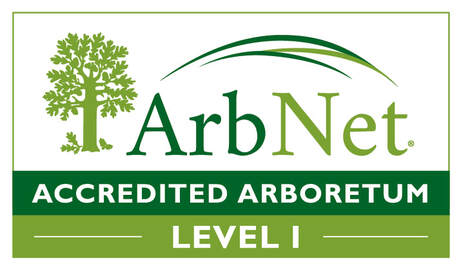In a world of nature’s extremes, the Arctic Ground Squirrel, Spermophilus parryii, goes to the head of the class. Like most of the wild’s most astounding residents, this rodent doesn’t stand out by sheer appearance. With a cream-colored belly and a brownish back flecked with fine white spots, North America’s largest ground squirrel blends in well in its arctic domain. At 19 inches in length and just 3.5 pounds in weight, it is a modest beast. Yet, what our little Arctic neighbor lacks in size, it more than makes up for in ability. With a perfectly calibrated body, metabolism, and lifestyle, the Arctic Ground squirrel is designed for life in one of the coldest habitats on the planet. Ranging from northern Canada to Alaska, to Siberia, these small mammals utilize their unmatched adaptations to conquer extreme cold.
So just how does this creature achieve what none of the world’s other 6,500 or so mammal species can accomplish? Specifically, how does it drop its body temperature more than 70 degrees to employ an entirely novel survival strategy among the planet’s mammals? The short answer is, we know the basics, but the finer mechanisms have proven elusive. Here’s what we know. In order to survive brutal Arctic conditions, Arctic Ground Squirrels hibernate for up to nine months each year. In August, as the temperatures begin their plummet, the ground squirrels seek shelter underground in hibernacula (communal hibernation chambers). It’s here that they enter a form of turbo-charged hibernation known as torpor. This extreme metabolic slowing of the body drops heart rate, respiration, and other bodily processes to a baseline maintenance threshold. Unlike their amphibian neighbors, the Wood Frogs (which also live above the Arctic Circle), which enter a state of continuous suspended animation, the ground squirrels rouse from their torpor every three weeks to shiver and use stored body fat. By doing this the large rodents enter a comfortable, or euthermic, temperature range of about 95 degrees Fahrenheit (4 degrees below their norm of 99 degrees). By rewarming in this manner for one to two days, these creatures can then endure a mercury plummet where, incredibly, their body temperatures drop below freezing—to an astounding 27 degrees Fahrenheit! This utterly unique capability comes at a cost, however. In order to withstand such extremes that would prove fatal to all other mammals and most of the world’s species, the ground squirrels deplete approximately one third of their body weight by burning stored fat. To accomplish this these ultimate survivors expand their menu beyond that of their close kin to include not only diverse plant species such as roots, grasses, flowers, seeds, lichens, fungi, and berries but also to gorge on insects, other invertebrates, eggs, chicks, birds, carrion, lemmings, non-related young of their own species, and even young Snowshoe Hares! These voracious omnivores consume everything possible during the brief Arctic summer to make it through the long Arctic winter. Combining natural physical adaptation with behavioral adaptation, the squirrels have learned to exploit a good thing. Expanding their selection beyond their traditional tundra, lake shore, meadow and riverbank habitats, these opportunistic rodents have moved in for the excellent accommodations, setting up shop in loosened well-drained soils along road shoulders throughout the Alaskan roadway system. Yet, such success has caught the hungry eyes of others. With expanding habitat and stable numbers throughout their range, the ground squirrels have attracted the attention of an army of predators including Snowy Owls, Gyrfalcons, Rough-legged Hawks, Golden Eagles, Arctic Foxes, Gray Wolves and Grizzly Bears. Such seasonal abundance provides stability and resilience to delicate Arctic food webs. In the Arctic Ground Squirrel, nature’s extremes have forged a unique, resilient, and indispensable creature which offers us a glimpse into what is possible when natural ability is coupled with a dash of adaptation.
2 Comments
Deanna Jacobs
4/12/2022 07:23:08 pm
Love this, Jim! Waiting for beets to finished cooking, will use in Easter green salad so popped on this zoo page, which I keep forgetting to look at. 🥴 I love squirrels. Mainly because they’re in my back yard and always put on a show. Their engineering feats are amazing. Kids’ picture books actually use in STEM classes! Stories I can tell you.... see you soon, Deanna J.
Reply
Darlene Fields
11/2/2022 01:25:08 pm
Hope those beets turned out lovely! I'm trying out a new recipe for a beet salad right now, and also decided to read about arctic ground squirrels! I just adore watching them nibble on our nuts from the oak tree in our back yard. I got my husband Richard to construct a feeder for them. Hope you are well!
Reply
Leave a Reply. |
Archives
July 2024
|
Connecticut’s Beardsley Zoo is dedicated to acquainting a diverse public to the delicate balance that exists between living things and their environment.
Connecticut's Beardsley Zoo is a 501(c)(3) not for profit owned and operated by the Connecticut Zoological Society.
Connecticut's Beardsley Zoo is a 501(c)(3) not for profit owned and operated by the Connecticut Zoological Society.
© 2022 Connecticut's Beardsley Zoo


 RSS Feed
RSS Feed





